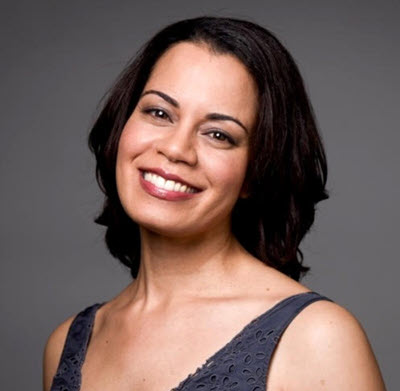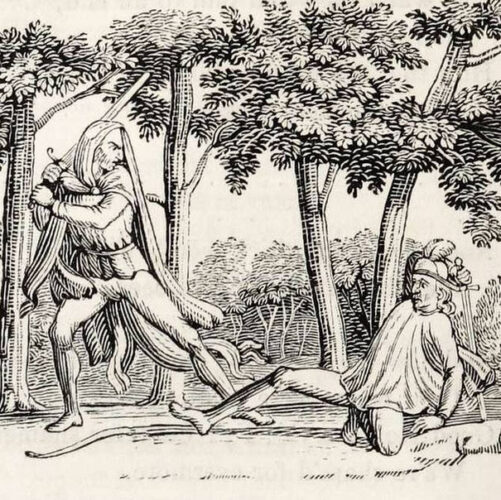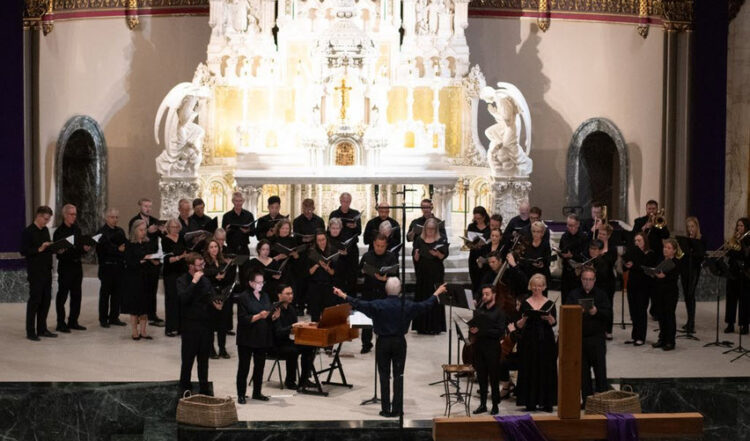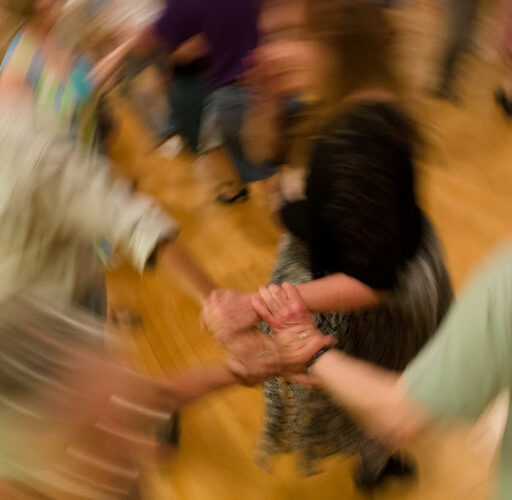by Michele Kennedy
Published February 17, 2025
Seeing Myself on the Concert Stage, and Being That Example for Others
I can recall two moments of true revelation as a working artist.
The first took place on a chilly January evening in 2018. I went to see some dear friends sing with the Exigence Vocal Ensemble in their debut at Carnegie Hall. The concert featured the phenomenal Sphinx Virtuosi, comprised entirely of young professional artists of color.

Sitting in the audience before the show, I knew — as a lifelong performing artist, and as a Black and biracial woman — that this performance would move me deeply. Even so, I was not fully prepared for what happened next.
After the concert’s opening announcement, the house grew quiet, and the side door opened for the Sphinx players to walk out on stage. They began to emerge with their instruments, one by one in elegant attire, Black and Brown and Latin American players of the highest caliber. Their radiance began to fill the stage, until each musician reached their place, turned to face the audience, and then took a bow all together as a complete orchestra.
Witnessing that stage full of musicians of color took my breath away completely.
I had never seen anything like it in my entire life. It was, and still is, par for the course to see orchestral performances with only a few musicians of color: one, two, or maybe five at most in a full symphonic orchestra. That was what I had experienced for decades as a performer. It’s simply been taken for granted as “normal” in the field.
And so, as the Sphinx players gathered on stage and took their first collective breath and began to play, I felt goosebumps all over my body and intense tears in my eyes. It was completely disarming to see a stage full of professional musicians who looked like me. And there was no rational way to prepare for it: the experience was entirely visceral, a full-body sensation that lit up my senses from head to toe and ignited a feeling of great possibility.
For aspiring young musicians — especially for those who lack access to live performances — seeing their own image reflected back from the stage can be life-altering. It can awaken music in their senses in a lasting way that nothing else can simulate.
This was my first revelation. We cannot underestimate the power of representation on the concert stage.
My second, and lasting, revelation has been the experience of centering this work of greater representation in my career, and in my artistic voice. Of being that example for others, only more conscientiously than before, as I now understand how profound its impact can be.
What does this mean in practice? Here are a few ways in which it has manifested in my own career, and it can take many different forms:
How about a curated salon that bridges genres with a shared theme?
In collaboration with Debra Nagy and Les Délices, I co-created a digital salon on the theme of the Orpheus Myth along with tenor Jason McStoots and scholar Susan McClary. (Our shorthand for this project was “Bossa Nova Meets Baroque.”) We traced the theme in musical selections from across the ages. Alongside pieces from Monteverdi’s opera L’Orfeo, Rameau’s cantata Orphée, and the Vaughan Williams song “Orpheus with his lute,” we featured the signature tune from Marcel Camus’s 1959 film Black Orpheus, a beloved retelling of the classic myth from Brazil.
How about combining early repertoire with new compositions on a similar text?
For five years, I’ve been a core member of the Kaleidoscope Vocal Ensemble, a group of ten vocal soloists and ensemble singers, principally singers of color, each of whom specializes in early music. Kaleidoscope’s (KVE) mission is to celebrate the power of representation on stage alongside musical excellence, and to mentor aspiring young students through shared performances and residency programs. All of KVE’s concerts combine early repertoire with music by living composers. We typically perform works by Bach, Purcell and Monteverdi alongside ones by Reena Esmail, Jonathan Woody (a member of KVE), Shireen Abu-Khader, and Caroline Shaw.
One example of this juxtaposition means a lot to me personally. It is the performance of Monteverdi’s “Nigra sum sed Formosa” (“I am Black and beautiful”) from his 1610 Vespers alongside a new setting of the same text set by Jonathan Woody. What is striking about Woody’s piece (aside from its uncommon beauty) is the full libretto: he and countertenor Reginald Mobley gathered first-hand testimony of micro-aggressions experienced by singers of color in the early-music world and set them to music. Each central motif expresses a different statement. While the soundscape is gorgeous, the substance of the work is fraught, often raw, and profoundly emotional to sing. And Jonathan’s ethereal “Nigra sum sed Formosa” chant — sung by a treble choir — overlays the whole work.
I have now sung Monteverdi’s “Nigra sum sed Formosa” in concert many times. I love its intimacy. The pairing with Woody’s piece demands that we all hold the striking beauty of Baroque repertoire alongside some of the most painful realities of the early-music world. Essentially, it is truth and reconciliation at work on the concert stage.
How about telling first-hand stories of Black soldiers from the American Civil War?
In her ongoing historical research, U.S. Poet Laureate Tracy K. Smith unearthed a series of letters written by Black soldiers during the American Civil War. Each tells a poignant story of hard circumstances, and relays a pressing need for help. With composer Aaron Siegel, Smith collaborated on a new oratorio, I Will Tell You The Truth About This, which premiered at New York’s Kaufman Hall in November 2023. (Aaron and I have worked together for a decade; I sang in this production and helped coordinate singers for the project.)
Just released as an album, I Will Tell You The Truth About This features the Longleash Piano Trio and chamber vocal ensemble. Each movement gives voice to a different letter written in the first person: there is a striking intimacy to this approach, and the way that it vivifies each individual’s story. In this way, Siegel and Smith’s work humanizes the lived experiences of these soldiers — whose stories have not been shared with the public — and empowers each performer with the honor of breathing new life into their stories with our singing.
The active work of representation on stage, when it’s done well, needs a few essential ingredients:
1) A thoughtfully curated theme
2) A clearly communicated context, shared between performers, directors, and audience members
3) The opportunity for further conversation (post-concert Q&A, reception with the artists, well-researched program notes, follow-up events related in theme)
4) A collective willingness to take risks and learn from them
With each of these essential elements in place, the work of true representation can begin. This work is very much alive in the field.
One great example is Bach Collegium San Diego’s performances of El Mesías: Handel’s Messiah for a New World, a full Spanish translation of the iconic oratorio. Not only is this work beautifully contextualized in performance; it makes a powerful statement about representation and inclusivity in San Diego, where Spanish is as prevalent as English. (The creation and success of BCSD’s El Mesías was the cover story in the January issue of EMAg.)
Another example that I love is Washington Bach Consort’s 2023 performance of J.S. Bach’s Saint John Passion, preceded by a panel discussion about Bach and his virulent antisemitism. The Consort partnered with a local synagogue and a Presbyterian church for this panel, moderated by bass-baritone and scholar Ian Pomerantz, a core WBC singer, to delve into the text and its historic context, including aspects that can be very difficult for Jewish musicians and audience members.
Acknowledging that historic repertoire — and many of our most vaunted masterpieces — can also come with human flaws and painful dynamics of their time is an important part of this work. Truth-telling is hard and often uncomfortable. But when we delve deeply into it, bare our hearts and get goosebumps and feel our blood pumping through our veins with the intensity of this work, we know that we are truly getting somewhere. This work is never easy, but when it’s done in safe and supportive community, it is profound.
Sometimes I forget how powerful a force this work has been in my life. When I am immersed in a performance of Bach, or Handel, or Haydn, or a recital of works by Bonds and Price or Strozzi and Monteverdi, as I am for a good portion of my career, I feel a deeper sense of belonging in the work because I feel more fully seen and understood for who I am.
I feel seen as a professional musician who loves singing with her entire being.
I feel seen as a lifelong student of music, with a deep and abiding love of historical performance.
I feel seen as a woman of color from Oakland, California.
I feel seen as a mission-minded artist who wants to help others to see themselves reflected on stage.
I feel seen as a work-in-progress who loves her mentors, and aspires to be one for others.
I feel seen as an open-hearted human being.
Altogether, this beautiful set of feelings is among the greatest joys of my entire life.
There is so much work of profound inspiration and thoughtful representation out there.
Let’s keep our spirits open and receptive. Let’s help each other to wade into the brave and uncomfortable waters of unlearning pathways that do not serve us, and to training the pathways that keep our hearts and minds open.
Above all, let’s keep creating. The world needs our voices and our human stories — and the deep love and passion and grief and rage and empathy that undergird them — as never before.
Be well in the work, friends. I can’t wait to see your stories reflected on the stage.
Soprano Michele Kennedy loves storytelling through music, singing in lots of different languages, and sharing the stage with dear friends. Please find more at Michele-Kennedy.com




